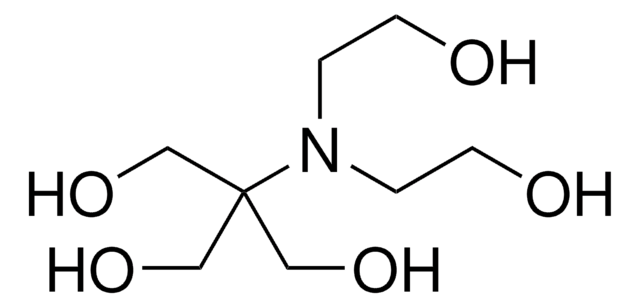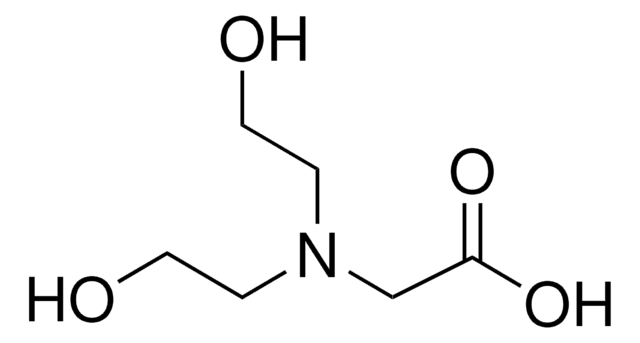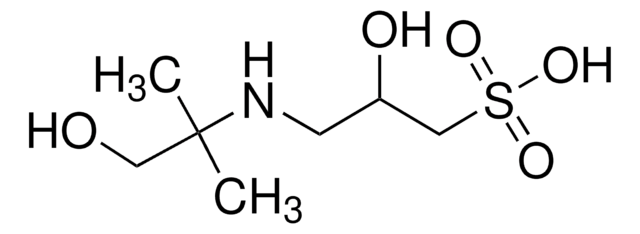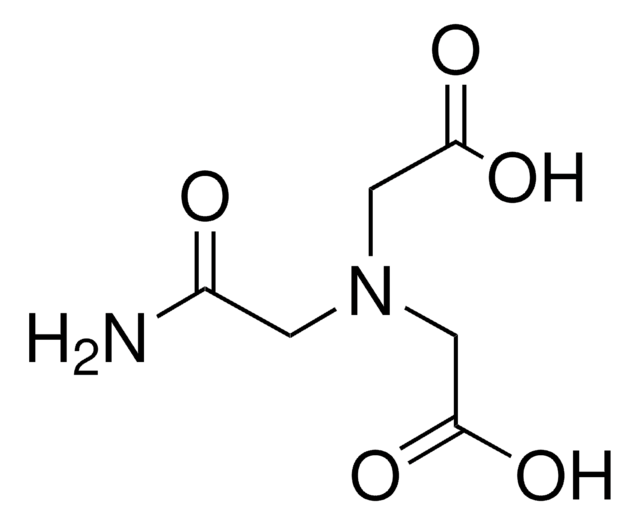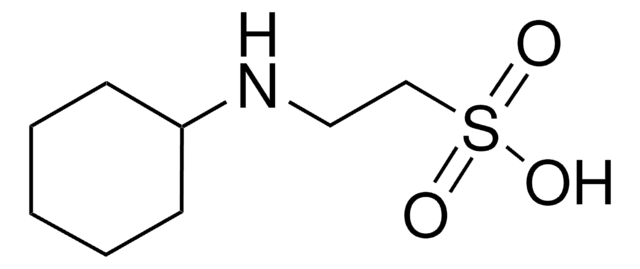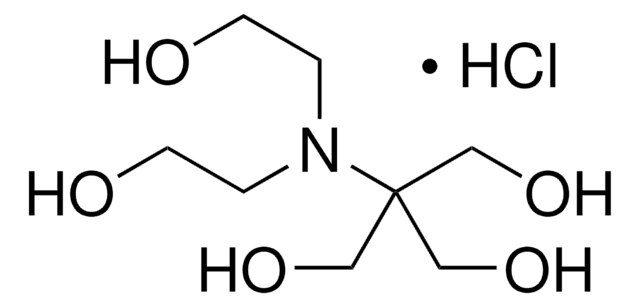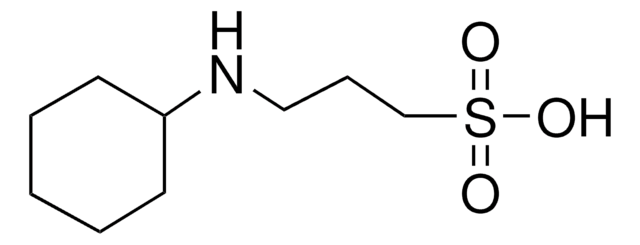Key Documents
B6755
BIS-TRIS propane
≥99.0% (titration)
Synonim(y):
1,3-Bis[tris(hydroxymethyl)methylamino]propane, 2,2′-(Propane-1,3-diylbis(azanediyl))bis(2-(hydroxymethyl)propane-1,3-diol)
About This Item
Polecane produkty
Poziom jakości
Próba
≥99.0% (titration)
Postać
powder
warunki przechowywania
dry at room temperature
metody
HPLC: suitable
kolor
white
przydatny zakres pH
6.3-9.5
pKa (25°C)
(1) 6.8, (2) 9.0
mp
164-165 °C (lit.)
rozpuszczalność
water: 30 % (w/w), clear, colorless
gęstość
1.179 g/cm3 at 20—25 °C
1.189 g/cm3 at 20—25 °C
przydatność
suitable for chromatography
suitable for electrophoresis buffers
Zastosowanie
diagnostic assay manufacturing
general analytical
life science and biopharma
temp. przechowywania
room temp
ciąg SMILES
OCC(CO)(CO)NCCCNC(CO)(CO)CO
InChI
1S/C11H26N2O6/c14-4-10(5-15,6-16)12-2-1-3-13-11(7-17,8-18)9-19/h12-19H,1-9H2
Klucz InChI
HHKZCCWKTZRCCL-UHFFFAOYSA-N
Szukasz podobnych produktów? Odwiedź Przewodnik dotyczący porównywania produktów
Opis ogólny
Furthermore, Bis-Tris Propane is a water-soluble buffer substance that plays a crucial role in enhancing the stability and activity of restriction enzymes. Specifically, its buffering capacity is advantageous for experiments that require pH levels as low as 6-7. When compared to Tris buffer, which has a poor buffering capacity below pH 7.5 and exhibits significant pKa fluctuations with temperature changes, Bis-Tris Propane proves to be a superior choice. Additionally, it finds application in conjunction with hydrochloric acid buffer to stabilize farnesyl diphosphate, particularly when isolated from Saccharomyces cerevisiae strains. Notably, it can also serve as a ligand, forming dinuclear hydroxo complexes with Lanthanides(III).
Zastosowanie
- as a buffer to investigate the influence of anions with varying nucleophilic properties on the autoxidation of oxymyoglobin (MbO2).
- for purification of glucose-binding protein from membranes of Sulfolobus solfataricus.
- as a buffer during GeO2 mineralisation.
- as a buffer component in a study pertaining to environmental research
- as a buffer component to maintain optimal pH conditions during the purification and preparation of engineered enzymes
Cechy i korzyści
- Suitable for Biological and Biochemical Research
- Tested to confirm low levels of heavy metal contamination, ensuring suitability for various applications
- Effective Buffering from pH 6.3-9.5 (25 °C) with a pKa of 6.8 and 9.0 (25 °C)
- Highly soluble in water
Inne uwagi
Kod klasy składowania
11 - Combustible Solids
Klasa zagrożenia wodnego (WGK)
WGK 3
Temperatura zapłonu (°F)
Not applicable
Temperatura zapłonu (°C)
Not applicable
Środki ochrony indywidualnej
Eyeshields, Gloves, type N95 (US)
Certyfikaty analizy (CoA)
Poszukaj Certyfikaty analizy (CoA), wpisując numer partii/serii produktów. Numery serii i partii można znaleźć na etykiecie produktu po słowach „seria” lub „partia”.
Masz już ten produkt?
Dokumenty związane z niedawno zakupionymi produktami zostały zamieszczone w Bibliotece dokumentów.
Klienci oglądali również te produkty
Nasz zespół naukowców ma doświadczenie we wszystkich obszarach badań, w tym w naukach przyrodniczych, materiałoznawstwie, syntezie chemicznej, chromatografii, analityce i wielu innych dziedzinach.
Skontaktuj się z zespołem ds. pomocy technicznej
